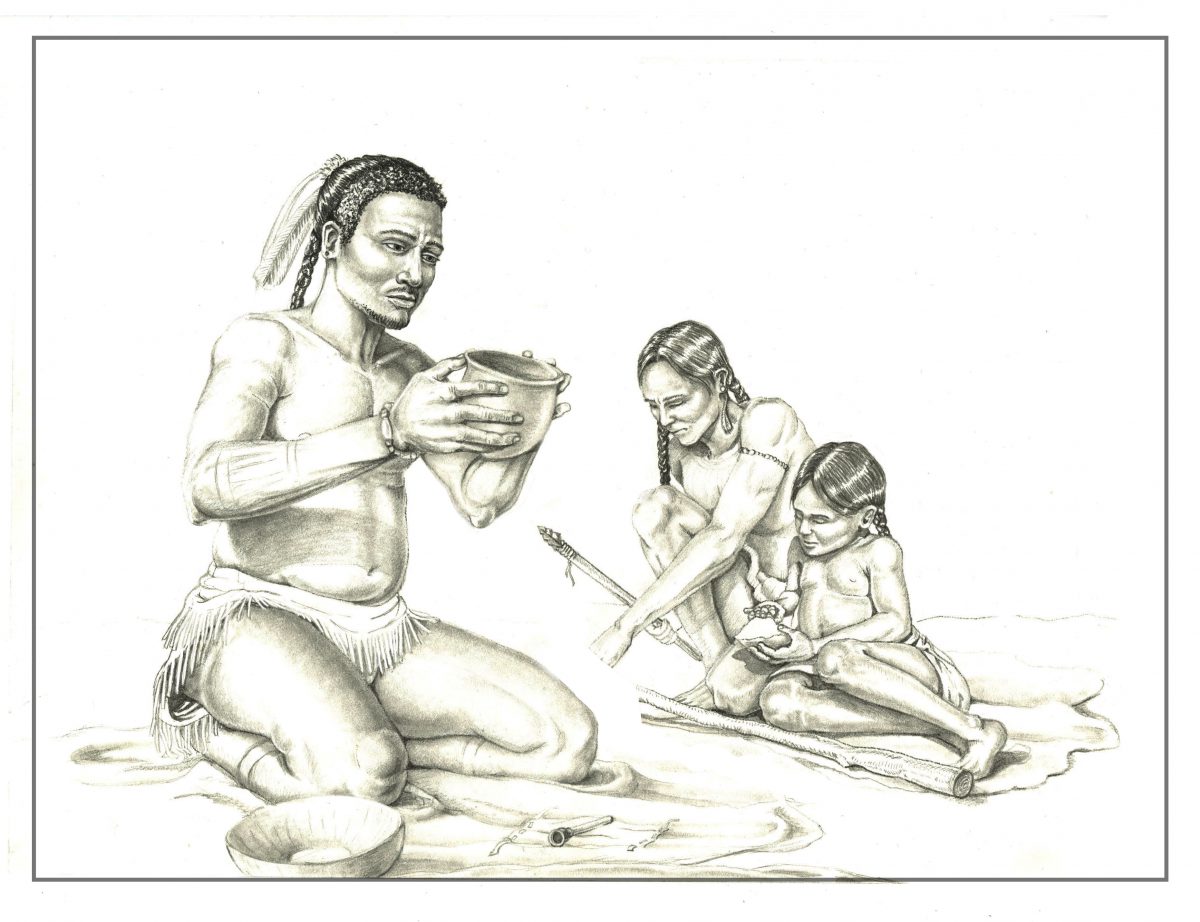The University of South Carolina Lancaster’s Native American Studies Center (NASC) will open several new exhibits during Native American Studies Week 2017 with numerous related events throughout the week of March 13-18. Share A Little of That Human Touch is a cutting-edge exhibit on Native American history in South Carolina that showcases the findings from the Johannes Kolb Archaeology and Education Project as well as other important sites in South Carolina such as Topper and the Fig Island Shell Ring. SC Humanities supported the creation of the exhibit and the related special programming with a Planning and a Major Grant in 2016.
Established in 2012, the Native American Studies Center at USC Lancaster is a comprehensive center for the study of South Carolina’s Native American peoples, their histories, and their cultures; it offers visitors the opportunity to view the single largest collection of Catawba pottery in existence; study primary and secondary texts on Native Americans in the Southeast; participate in educational classes and programs; and observe archaeology, language, and folklore and oral history labs.
Events during USC Lancaster’s 2017 Native American Studies Week include:
Thursday March 16th | 1:30 pm
Opening of Piedmont American Indian Association’s Tribal Exhibit
Members of the Piedmont American Indian Association– Lower Eastern Cherokee Nation of South Carolina have put together an exhibit that represents their tribe, history, and culture that will be on display at the Center from March 16, 2017 until March 1, 2018. Curated by Chief Gene Norris and Victoria Norris, this exhibit is the second at the Center to be curated by one of the South Carolina tribes.
Location: Duke Energy Gallery, Native American Studies Center, 119 South Main Street, Lancaster, SC 29720
Friday March 17th | Noon-1 pm
Archaeology of the Southeastern Archaic Breaks New Ground
The monthly Lunch and Learn Lecture Series will host nationally recognized prehistoric archaeologist Dr. Kenneth E. Sassaman, Hyatt and Cici Brown Professor of Florida Archaeology at the University of Florida.
Location: Old Presbyterian Church–Cultural Arts Center, 307 West Gay Street, Lancaster, SC 29720
Friday March 17th | 1:30-2:30 pm
“Share a Little of that Human Touch”: The Prehistory of South Carolina
Exhibit Opening and guided tour by the exhibit curator Christopher Judge. Share a Little of that Human Touch: The Prehistory of South Carolina will open over an event filled three days March 16-18, 2017. This exhibit will showcase the findings from the Johannes Kolb Archaeology and Education Project as well as other important sites in South Carolina such as Topper and the Fig Island Shell Ring.
Location: Native American Studies Center, 119 South Main Street, Lancaster, SC 29720
Friday March 17th | 3:00-4:30 pm
Big Picture Archaeological Research in South Carolina and the Southeast and Beyond
Native American Studies Week Lecture by Dr. David G. Anderson University of Tennessee, a nationally recognized prehistoric archaeologist.
Location: Old Presbyterian Church–Cultural Arts Center, 307 West Gay Street, Lancaster, SC 29720
Saturday March 18th | 9 am-4 pm
Native American Studies Festival
USC Lancaster will host their Annual Native American Festival at the NASC with Native American arts and crafts vendors, Native American music, primitive technology demonstrations and exhibit tours.
Location: Native American Studies Center, 119 South Main Street, Lancaster, SC 29720
All events are free and open to the public. All locations are within easy walking distance of NASC within Lancaster’s Cultural Arts District. For more information see http://usclancaster.sc.edu/NAS/index.html or call 803- 313-7172.
The mission of SC Humanities is to enrich the cultural and intellectual lives of all South Carolinians. Established in 1973, this 501(c) 3 organization is governed by a volunteer 23-member Board of Directors comprised of community leaders from throughout the state. It presents and/or supports literary initiatives, lectures, exhibits, festivals, publications, oral history projects, videos and other humanities-based experiences that directly or indirectly reach more than 250,000 citizens annually.
